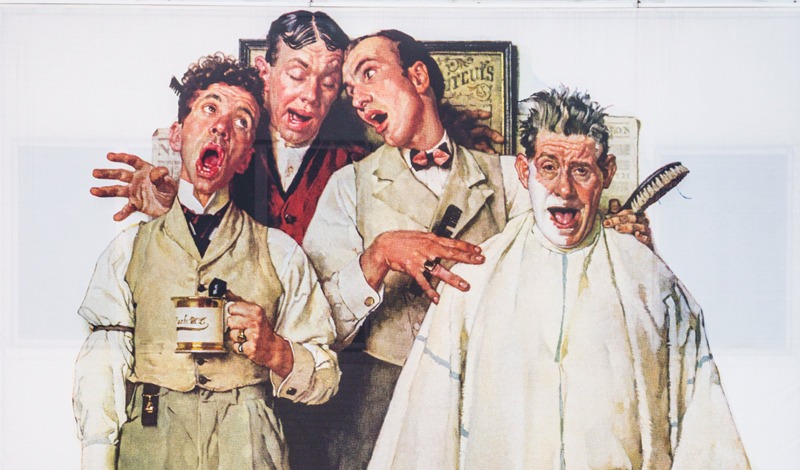Born in New York City on Feb. 3, 1894, Norman Rockwell dropped out of high school at 16 to pursue art full time at the prestigious New School of Art, then at the Art Students League of New York. Upon graduation, Rockwell found immediate work as an illustrator for Boys’ Life magazine.
At the young age of 22, Rockwell accomplished a coveted feat that set the course of his career—illustrating a cover of The Saturday Evening Post, a then-weekly magazine with some 2 million subscribers. The illustration of three boys, run in the May 20, 1916, edition of the magazine, is classic Rockwell. One scowls under the weight of new responsibility, pushing a baby carriage with a newborn sister inside, past the other two, dressed and heading for baseball, who tease and flaunt their freedom.
Over the next 47 years, Rockwell would illustrate some 320 covers for the magazine. His illustrations, routinely dismissed by critics for their sentimental bent, resonated widely with America’s working class. His works—whether depicting Charles Lindbergh’s transatlantic flight, the humorous moments of small-town life or simple family gatherings—became recognizable cultural touchstones. Responding to critics, he said, “Maybe as I grew up and found the world wasn’t the perfect place I had thought it to be, I unconsciously decided that… it should be, and so painted only the ideal aspects of it.”
The ’30s and ’40s marked Rockwell’s most prolific period. Living in Vermont with his second wife, Mary, and their three sons, he immersed himself in its rural life and drew endless inspiration from it. During World War II, his “Four Freedoms” series—”Freedom of Speech,” “Freedom of Worship,” “Freedom from Want” and “Freedom from Fear”—struck a powerful chord, touring the nation and raising more than $130 million for the war effort.
In his later years, Rockwell did move beyond romantic Americana to focus on pressing social issues. One of his most powerful works, “The Problem We All Live With” (1964), depicts young Ruby Bridges integrating a New Orleans school under federal protection. Flanked by faceless U.S. marshals, the 6-year-old girl walks past a wall bearing the marks of a smashed tomato and a scrawled racial epithet. The painting challenged audiences and marked a bold new direction for this artist whose work had become synonymous with idealism.
Honored in 1977 with the Presidential Medal of Freedom, Rockwell lived long enough to see his work acknowledged as cultural history. He died in Stockbridge, Massachusetts, on Nov. 8, 1978, leaving behind something more than art: a mirror of America’s struggles, dreams and ideals.
—Prepared by the World Tribune staff
You are reading {{ meterCount }} of {{ meterMax }} free premium articles

